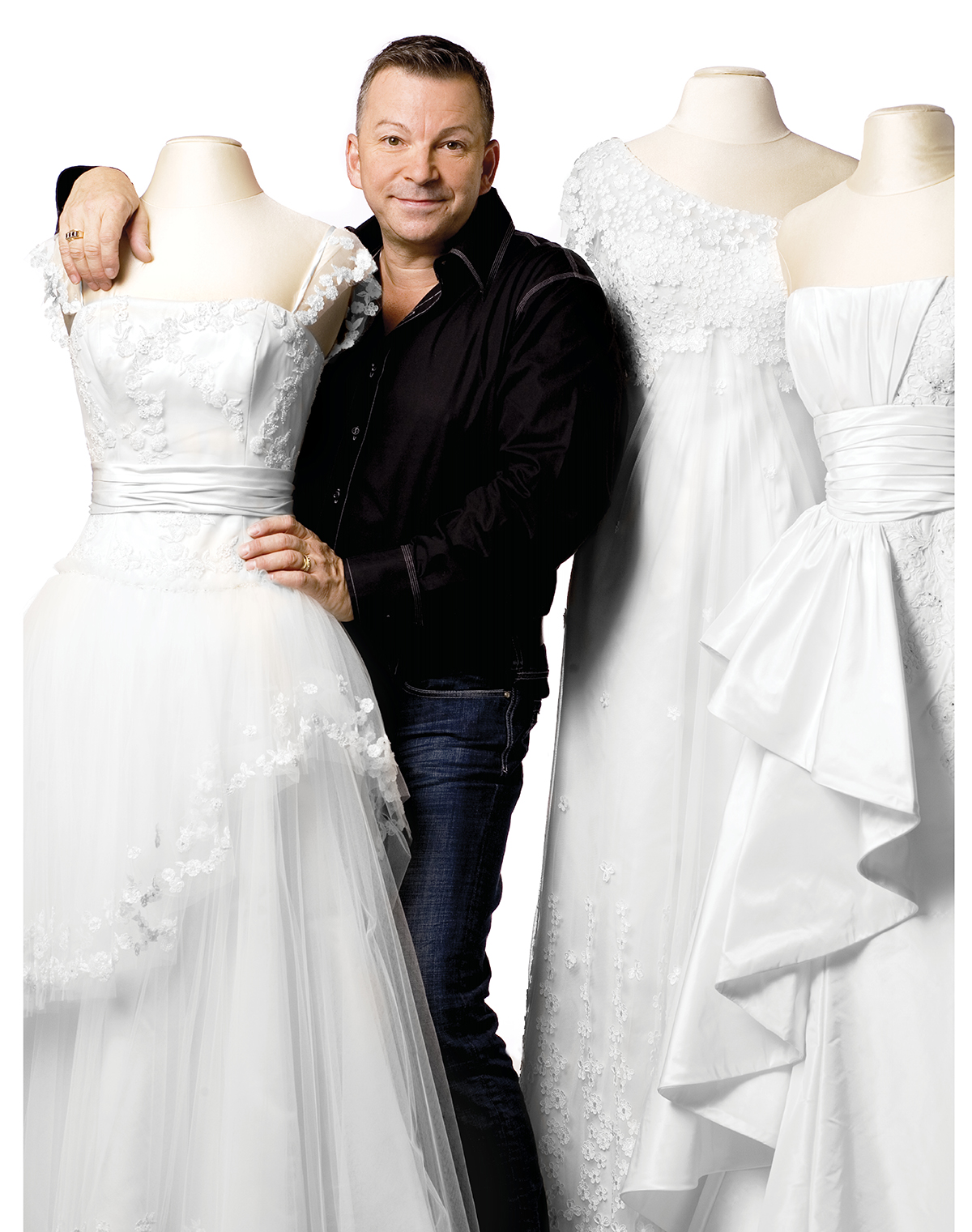Ask The Experts: The Seamster
Back when Daniel Faucher began designing wedding gowns, voluminous hats and hoop skirts were all the rage. It was the early ’70s, and he was 15. His schoolteachers traded vows in Faucher originals, while his mother’s country club posse placed custom orders. Today the gregarious couturier—an alum of Boston bridal stalwarts Priscilla and Bianchi—runs his own studio-showroom in the South End. Styles, he notes, come and go, but fine craftsmanship is always in vogue.
[sidebar]Why bother with custom? Why not just browse the racks at Vera Wang?
You can go into any bridal boutique and finds lots of dresses. But having that one dress that’s perfect just for you…that’s the ultimate goal. You’ll be photographed 600 times in this gown; you should think of it as a costume.
Sounds frightfully expensive.
Our wedding dresses start at $2,000. The priciest one I ever did was for a royal Indonesian bride—it cost $16,000 and I worked on nothing else for three months. But really, we work within people’s budgets.
How should brides prep for their first appointment?
You can bring in any clippings that strike your fancy. And I always tell women, “Look at your favorite pictures of yourself. What are you wearing? If you hate your arms in every picture, then you probably won’t want a sleeveless gown.” I also ask for a photo of the couple. I have to carefully consider the groom’s stature so he doesn’t get swamped by too much dress.
Okay, what’s next?
Well, we’ll sit and talk about the event—the location, the weather, the time of day. I’ll be sketching based on your needs and budget as we speak. I always joke that it’s like a doctor’s appointment because at the end of the first consultation, my measuring tape comes out! After that I’ll start on a muslin version of the garment, and then you’ll come back in for a series of fittings. The whole process usually takes about six months.
Does it totally throw you off if a bride keeps losing weight?
It’s crazy—four to seven pounds is a whole dress size in couture! Ten years ago this never used to happen; we’d finish a dress a month before the wedding and that would be that. But now I know designers who won’t even touch dresses until the very end since brides are losing so much weight. Another thing that’s very important is where you are in your monthly cycle. If we have a fitting when your chest is at its smallest, your dress might not fit right a few weeks later.
Is there one style that can complement every figure?
A princess line, which is vertically seamed from top to bottom, works for anyone. It can have straps or be strapless, with or without a strong waistline. It’s the classic silhouette.
Is strapless still the biggest trend?
Yes. Fifteen years ago I couldn’t give away a strapless dress. I used to do them only for fashion shows because they were so dramatic-looking. And everyone would say, “Well, I could never wear that!” Now almost every bride is wearing one.
But shouldn’t some people steer clear of strapless?
There are a lot of body types that should. I tell them, gently, that there are more options. Sometimes a line that runs all the way up your body, from waist to shoulder strap, makes you look thinner and six inches taller. This is why I have mirrors all around and do a detailed muslin fitting, where there are no beads or bells or whistles.
What other looks are “in” right now?
We get a lot of modified trumpet requests. Unlike with a full mermaid shape, where the gown is fitted to the knee, a trumpet cinches a bit higher—the fullness begins wherever you choose. This is great for older brides, or people who carry a bit more weight on top. The shape brings the eye to the bottom, and when you move, you get that va-va-voom effect. And to me, a long-sleeved bride is just exquisite.
How about color? Is plain white a no-no?
I love color! I like to showcase details with different shades of white. We only work in silk fabrics, and silk whites aren’t as harsh as most. Now, I wouldn’t say stark white is 100 percent out, but I definitely think layers of eggshell or off-white on an all-white background are more effective. I’m also wild about blush tones and ivories coupled with golden hues.
What’s your personal style?
I love lots of lace and beading. Some people like less and some people like more. I like more. To me, less is less!
Daniel Faucher Couture Design, 46 Waltham St., Ste. 207, Boston, 617-338-6895.
